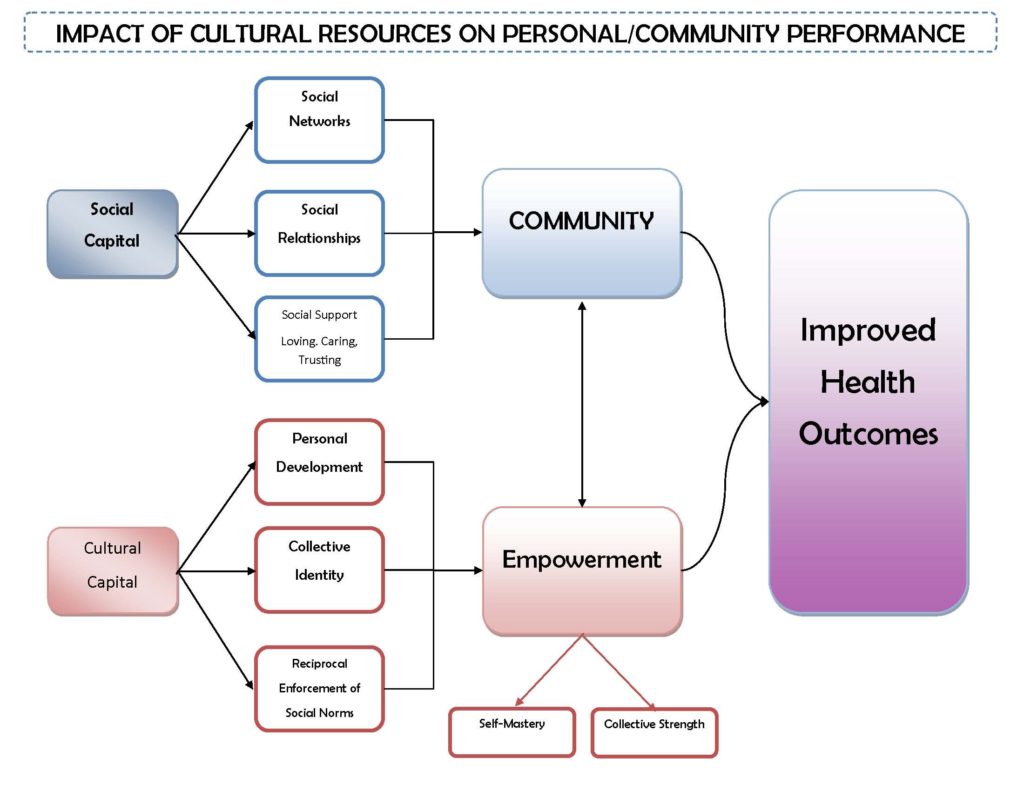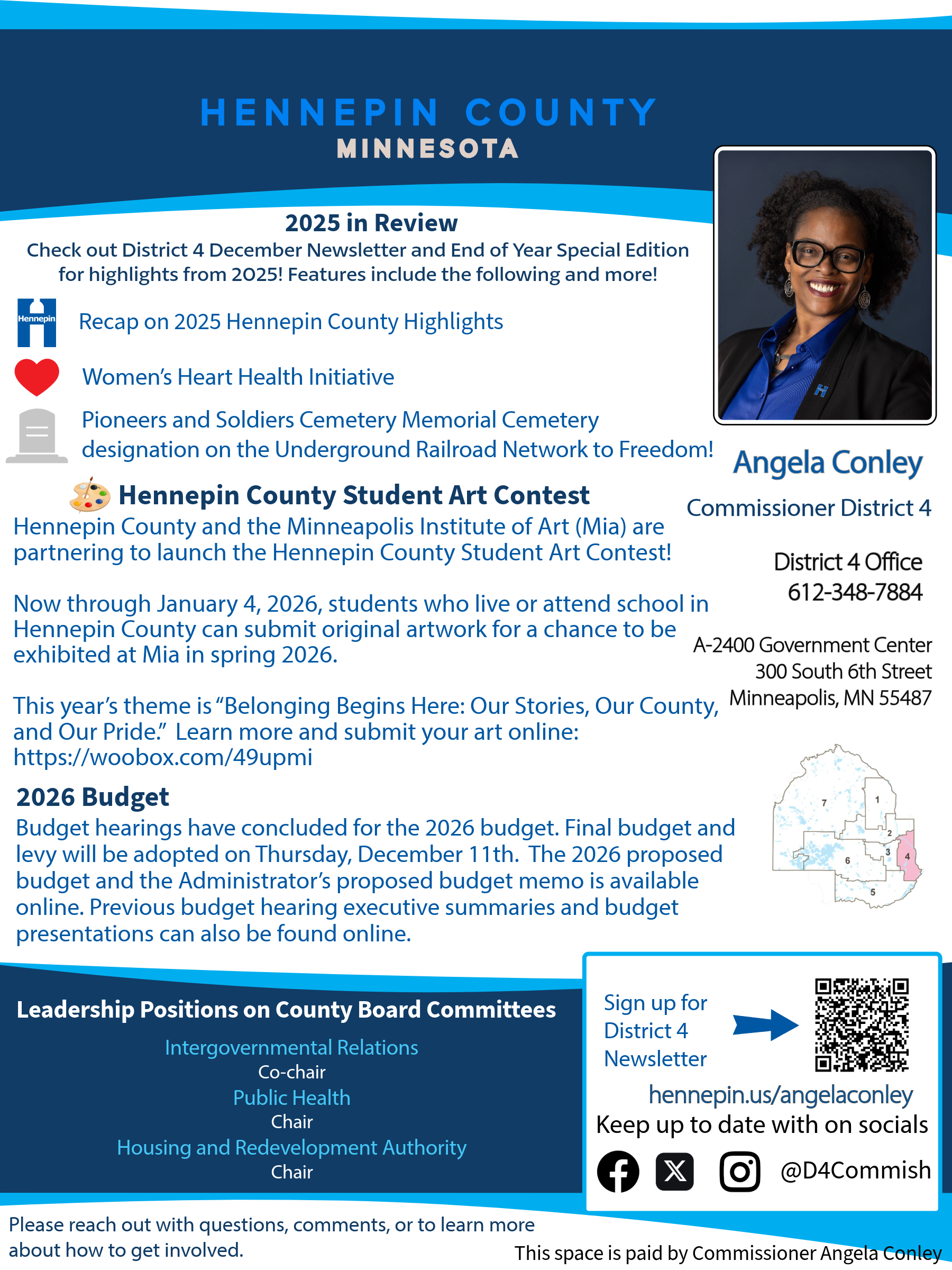In 2008, residents of South Mpls, the CEO of Allina, and African American, Native American, and European American elders from Mpls. and St. Paul, approached the Cultural Wellness Center”'s (CWC) Executive Director/elder activist and requested that CWC design the model of engagement for what is now known as the Backyard Initiative (BYI). Eight years later, the BYI model is in place. Each component of the initiative mirrors the CWC engagement design. The patterns and practices of the BYI are grounded in cultural knowledge and ways of knowing. Time dimensions and community development by Ahmed Azzahir is the primary research from which the CWC draws its core knowledge. Faculty of the CWC articulate, research and disseminate culturally specific understandings; analyze problems and thought patterns; and draft action plans for the BYI. The elder faculty members are facilitators, organizers, conveners, and hostesses of learning circles. They are a new generation of scholars and culturally engaged leaders in which the CWC is a leader in developing. Today, after 20 years of working in the community, the CWC has on record given over 1000 people the renewed focus of living in harmony with community and culture.
by Atum Azzahir and Andre Graham
The Cultural Wellness Center (CWC) exists “to unleash the power of citizens to heal themselves and to build community.” A Board of Directors and a Council of Elders govern the CWC. The Founder and eighty percent of the people that work with the Center as organizers and cultural activists, started in 1996 when the organization began. The CWC burst forward from dialogue, kitchen table and front porch conversations with over 1,000 people between 1994 and 1996. This voicing by local residents is the guide as we continue to harvest insights from experiences that cultural groups have with pain and suffering. Community residents helped design this organization to function as an intermediary of community-institutional partnerships.

Elder African faculty of the CWC and Backyard Initiative
There are three cost centers within the organizational structure: the Invisible College, Member Services and the Health Institute. The Invisible College is a conceptual center that is the place for informal teachings and learning”'s to be acknowledged as legitimate forms of certified knowledge. The informal learning system that exists in cultural communities is replicated in the Invisible College. The faculty in the Invisible College includes: Elder Coaches, Systems Navigators, Curriculum and Knowledge Production Specialists who have trained through life experiences and the disciplines of survival. The method of teaching is internal, external dialogue, self-study, self-reflection and personal/community self-development.

Cultural Wellness Center Fellows
Evaluation of effectiveness is done through the CWC”'s scale of engagement. The scale of engagement is a tool through which cultural value systems count the elements of life stories and processes in achieving success.
Member Services consists of supportive, reciprocal offerings from people who have survived, overcome, and want to give back. This service the CWC provides is an organic gift related to the production of knowledge while building community with its members.
Central to teaching cultural health practices is the CWC”'s Health Institute. The teachers of cultural health practices teach self-care and listening to the body for wisdom and knowledge which lead to self-healing. Self-healing is an alternative system of care expressed through listening, ceremony, kinship, and rituals with the cultural Elders. During the creation of the organization, the Elders insisted that to improve the health of their community, the CWC must: 1) help members of the community take ownership and responsibility for their own health, 2) actively engage local community residents in creating new models that lead to improved health in cultural communities, 3) teach professionals how to work with cultural communities, 4) be an organization that promotes community knowledge/power in every aspect of building community. These objectives continue to allow the CWC to create solutions and models that speak to the particular experience of local residents and families.

The Peoples Theory of eliminating sickness
The CWC”'s work has been described as a principal subset of community development, often referred to as a prerequisite to community development. In her dissertation, Katherine Tilney, PhD., “[The Cultural Wellness Center] stands out relative to other groups working in this field in that it relies on [systems thinking] that embraces practical knowledge over clinical expertise.” Tilney further suggests a way to view the work of the CWC could be “in the province of human development,” wherein “the knowledge… on which the agency operates is an alternative to the mainstream helping [model] which has proved relatively ineffective with constituencies like [the ones participating in the Center”'s work].” In her ethnographic study featuring the Cultural Wellness Center, Jackie Copeland-Carson, PhD., discusses how creating a sense of culture within an already prescribed cultural context, as the Center does, affects every aspect of the organization”'s operation. As an example, from the reception area to the kitchen to the movement space, the Center staff creates new, open spaces for people to identify, envision and take action in their own best interest.
Staff members of the CWC teach people to connect and understand their culture because culture gives knowledge and vision — a lens through which success, progress, wellness, and wholeness are determined. Many in the community have had crises, sometimes cross-generational in nature that drastically alters their vision. Elders from cultural communities name loss of culture and loss of community as the chronic health problem to be solved. The Peoples “Theory of Sickness” is the frame for cultural wellness and community engagement. This “Theory of Sickness” received a Blue-Cross Blue-Shield community health award. A Community Health Leadership Award in 1996 from the Robert Wood Johnson Foundation catapulted the CWC forward. These awards acknowledged the convergence of community knowledge and the power of building community as necessary to change and transformation.

CWC/BYI triple bottom line investment:Â Cash, culture, connections.









